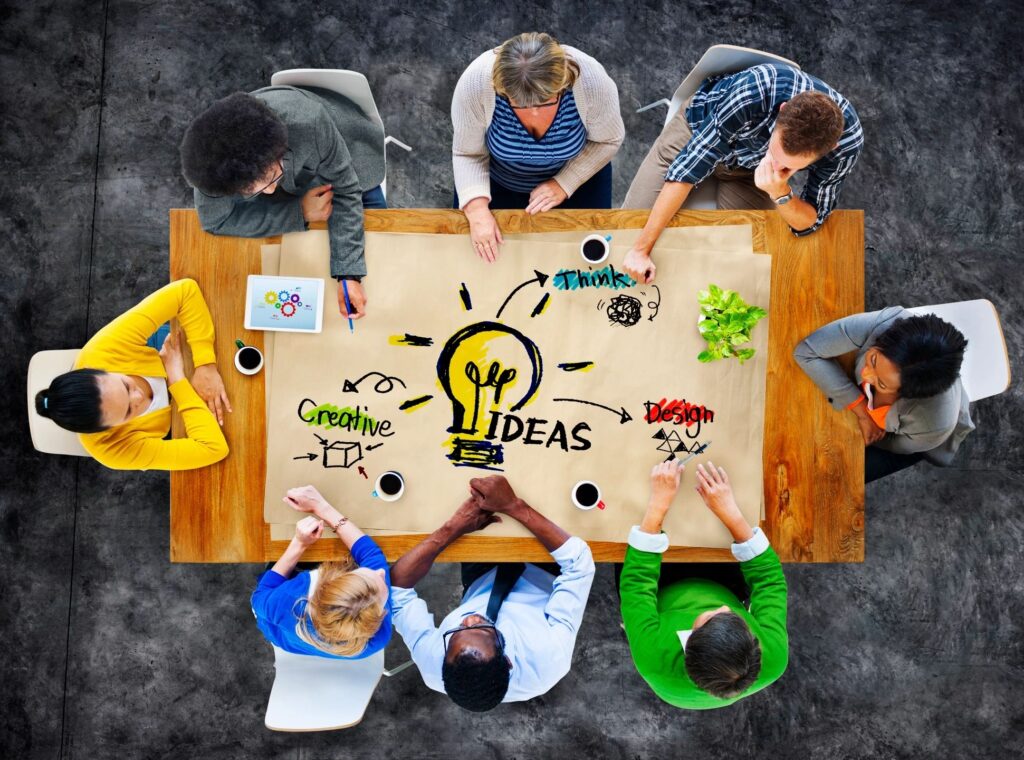
Anyone who knows me, or has worked with me, will tell you that I’m relentlessly strategic and uncompromising when it comes to producing results. When I undertake a new initiative, I’m all about the planning. I intensely dislike flying the plane while it’s being built and constantly worry about wasting resources and mistakes that duplicate effort.
Some would say the way I “create” new products and services is not creative at all. My preference is to have clearly defined processes, accurate estimates of inputs, and precise expectations for results – all of which map nicely to a tight timeline.
So, it should come as no surprise that many have described me overly concerned with efficiency and effectiveness. And maybe I am.
Interestingly, my reaction to the concept of Effective Altruism seems to go against my natural tendencies. I share that with you in the post that follow.
My exploration of Effective Altruism left me with many valuable insights, including the dangers of over relying on methodology and the importance of demonstrating simple acts of kindness when leading project teams.
I hope you also find takeaways that help you grow personally and professionally.
Effective Altruism
This month’s cover story in Time Magazine explores effective altruism (EA), a movement based on the belief that our individual actions can change the world. The EA movement links the choices we make today with the wellbeing of future generations.
How to be an Effective Altruist
EA is based on the belief that all human lives should be valued equally. But it’s not enough to just accept this belief. EA encourages people to take action.
Even though all human lives are valued equally, the opportunities to act in ways that benefit those lives are not. EA encourages us to evaluate those opportunities based on how important, neglected, and solvable a problem is. They offer a complex mathematical formula that quantifies the tradeoffs inherent in selecting to focus on one problem versus another. For EA followers, the goal is to act on only those opportunities that maximize the benefit resulting from the resources utilized.
Clearly, there is value in making careful and informed choices about how and when to take action that benefits individuals and society. Time, money, and other resources are not infinite, so it makes sense to prioritize those opportunities that both optimize resources and maximize positive impacts – thinking about both the short and long term.
In providing this framework, EA is making an important contribution to our global society. At a minimum, the movement has increased overall awareness about the need for, and opportunities to, engage in actions that have a positive social impact. EA has also driven interest in longtermism and built a strong base of support among a billionaires. It’s impossible to make progress on the biggest problems threatening society without sufficient financial backing!
How Much Good is Enough Good?
One of the founders of the EA movement, William MacAskill created Give What You Can and 80,000 hours – both of which have accrued strong followings. Give What You Can helps donors think critically about their charitable impact. 80,000 hours encourages individuals to pick a high impact career that will enable them to have the most impact on the world’s most challenging problems.
Though distinct from each other, both organizations have a common central theme: they challenge people to not stop at doing “some good” – but to seek to do the “the most good” possible. Doing “some good” or “the most good” isn’t’ about spending every spare dollar or every spare moment contributing to a cause. Rather, the idea is to be intentional: effective altruists seek to act in ways that produce the decided, decisive, or desired effect.
This raises an interesting question: is it not enough to simply choose to do good deeds? Do all acts of helping others need to be analyzed and optimized? What would happen if, before doing a mitzvah, – conscious acts of empathy and kindness – we needed to stop and make sure that was the “highest impact” good thing to do?
It’s wise to be thoughtful about how we approach “doing good” because – there is only so much one can do. The EA movement provides us with helpful guidance on how smart choices. But there might be a danger in the universal application of its rules. Sometimes the opportunity to act altruistically emerges quickly or unexpectedly. We may not always be afforded with time to conduct an analysis or identify the tradeoffs.
At times, we find ourselves with a small window of opportunity to act in ways that benefit “other”. We are almost forced decide “in the moment” if we are going to help another person or not. Think about the last time you attended a charity event. If there was a live auction or a call for donations, it might seem strange if you started doing math on the back of a cocktail napkin.
EA’s goal of ensuring the effectiveness of altruistic behaviors gets complicated when it is applied to different types of altruism. Consider altruistic donors – individuals who donate their kidney to an unknown recipient. These individuals are demonstrating a unique kind of concern for the wellbeing of others. But, often times, they have no idea who the recipient of their kidney will be.
Applying EA rules to opportunities for organ donation suggests we need to know something about the recipient as well as all potential recipients. If that information remains unknown, how can the analysis be conducted? To further complicate matters, there’s some disagreement about whether donating an organ should even be characterized as altruistic.
Another challenge of engaging in effective altruism arises from the fact that altruism appears to be a fluid construct. Infants are likely to engage in altruistic behavior but those tendencies vary over time. Situation and context and social, cultural and religious factors can all influence displays of altruism. This suggests a person’s assessment of how important, neglected, and solvable a problem is could also be subjective, context-driven, and vary across the life span.
Finally, it appears that not all individuals have the same capacity for altruism. Abagail Marsh’s research has shown that the brains of the extraordinarily altruistic have unique characteristics, including a larger amygdala. Neuroscience research has also shown extraordinary altruists are better able to pick up cues that signal a person is in distress. They also maintain a circle of people about whom they are concerned that is larger than average. In addition to the extraordinary altruists, we also have the extreme altruists, who tend to make intuitive decisions, not calculated ones. Would all these people approach the calculus of effective altruism the same way or reach the same decisions?
Beyond Altruism
I applaud the EA movement for what it has done to refine how we think about the choices we make and actions we take with respect to social impact. It is hard to criticize anything about a movement that focuses global attention on importance of doing good. I wish we lived in a world dominated by social norms that actively encourage individuals to do things that bring advantages to others, and look past the personal disadvantage those actions might bring.
“Thinking more about other” is a paradigm that can guide us toward becoming a better society. And while altruism may be part of this paradigm, there is room for other constructs. In her research, Dr. Marsh also found that extraordinary altruists have other characteristics in common: humility, generosity and moral courage:
People who are humble see everyone as equally deserving of care and compassion. As a result, they tend to have stronger connections with others and greater self-awareness. Generosity is a willingness to give or share. EA advocates are quick to point out that altruism is not generosity, because the latter involves some notion of reciprocity. While these distinctions may be important to some – altruism and generosity share a common orientation towards the world: selflessness.
Moral courage is the willingness to speak up or take action against a situation that conflicts with one’s morals or notions of justice. Those with moral courage will speak up when someone else is harmed – even if they remain unaffected by those same conditions. Those with moral courage, like those who are altruists, see themselves as bound to others through a shared humanity. It’s simply not possible for them to not do something.
Conclusion
The rise in popularity of EA is a good thing for many reasons. Among them, it prompts us to develop a deeper understanding of altruism. Developing a deeper understanding can lead to greater awareness of, and attention to, other human qualities that should likewise cultivated because they make the world a better place.
Paul Ekman offers us a different framework for understanding the actions of those individuals who consistently choose to help others. Ekman calls it heroism : choosing to act for the benefit of another, despite the consequences to ourselves and without the expectation of reward or recognition. According to Ekman heroism can be taught and learned. If that is true, humanity has a significant amount of untapped potential to do good.
In my own way, I, like many others, strive to be a person who does some good each day. I aspire to a life that, when over, leaves the world better than I found it. I welcome the new approach to “doing the most good” that EA offers. If I think about it from a longtermist perspective, maybe EA is the modern day version of the common good philosophy of 2000 years ago. Maybe EA will stand the test of time and shape hundreds of the generations yet to come.
That reference to the greater good remains today suggests that most people want to live in a world that includes a shared a sense of our collective responsibility. Fortunately, people who want to “do good” – be it a little good, some good or the most good, have lots of options. There’s no shortage of lists of things to do to make the world a better place.
EA invites us to think about how much good each of us can do and how much impact we want to have on which specific problems. That’s a step in the right direction.
But as we think about solving some of the world’s biggest problems, let’s not forget about the big impacts we can have by simply being intentional about how we interact with the rest of humanity on a daily basis. Simple acts of kindness – being patient, suspending judgement, and really listening when someone else is talking – also help to make the world a better place.
